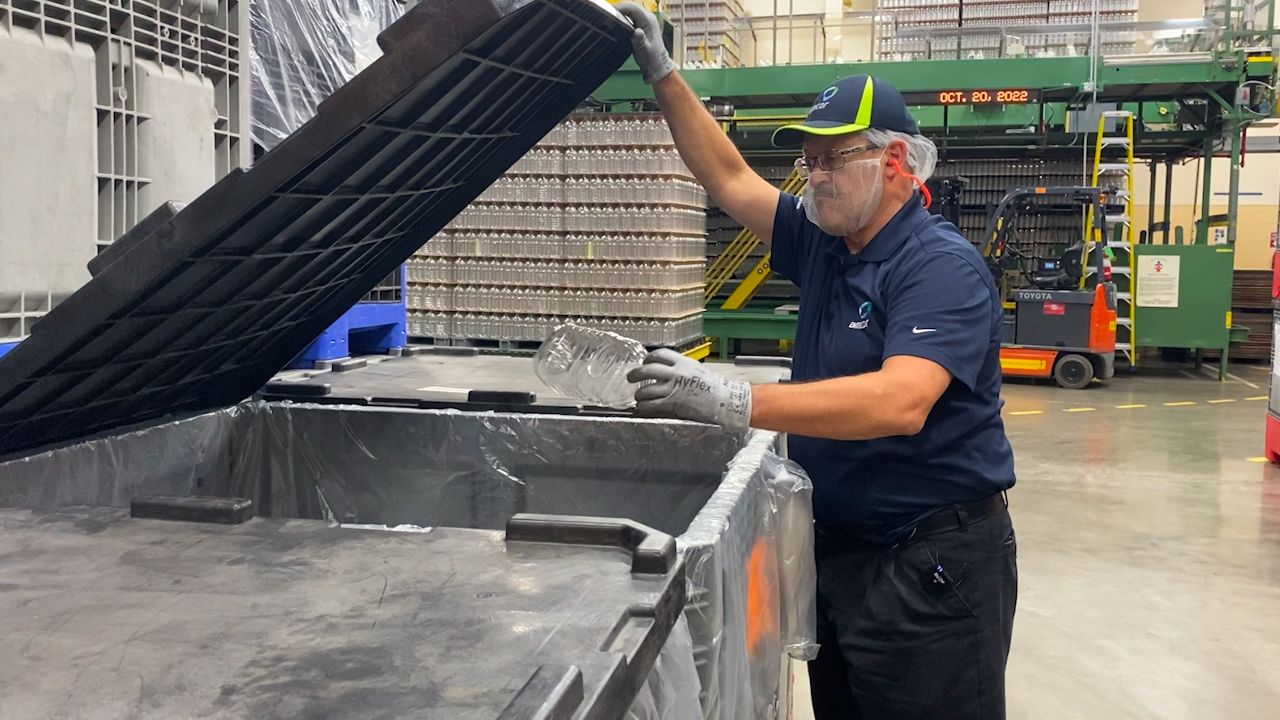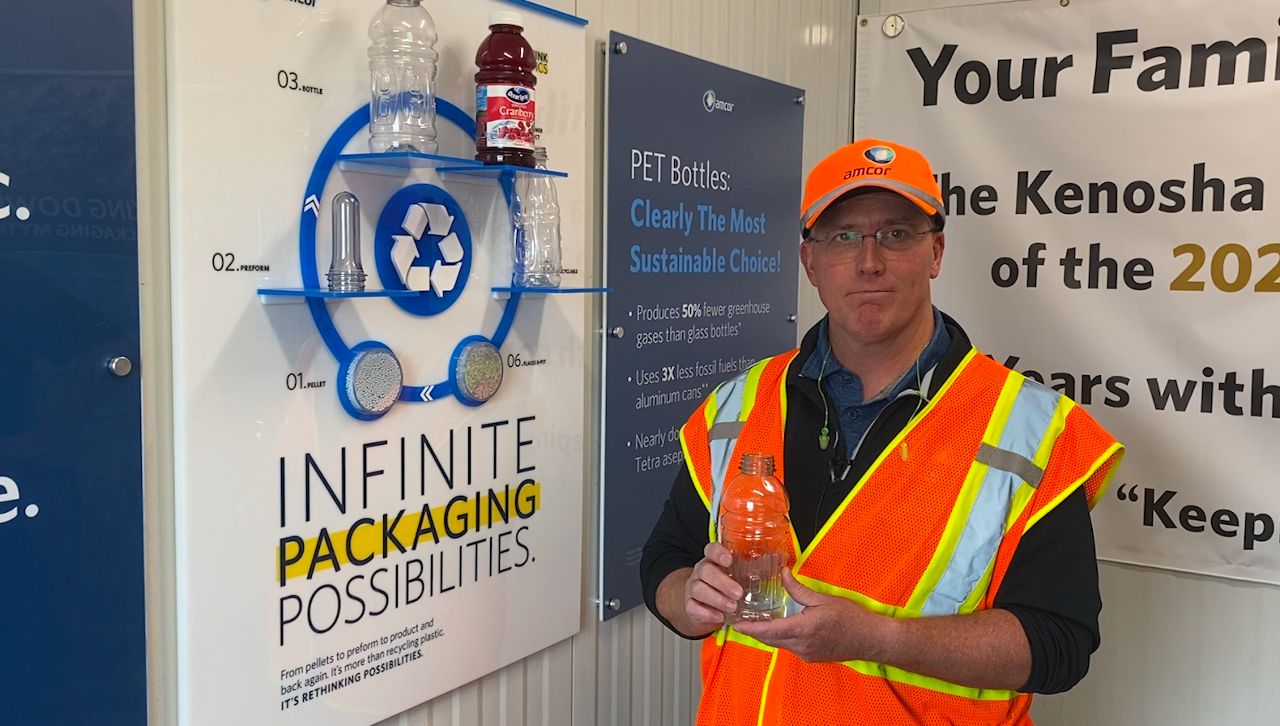KENOSHA, Wis. — Amcor Rigid Packaging is showing how PET bottles can be more sustainable for the environment after a positive report about the "Climate Impact of Plastics."
Dan Schneider is a plant manager for Amcor Rigid Packaging's Kenosha facility. He and his team make bottles for Ocean Spray.
“Blow molding is a process of reheating this plastic material that is basically what we call a preform,” said Schneider.

Like many plastics bottles, they are made of thermoplastic called polyethylene terephthalate. It’s known as PET bottles, for short.
“There’s a stretch rod that comes down to help guide the preform to the bottom of the base and air pressure, lower air pressure starts to balloon the bottle out once the stretch rod reaches the bottom of the base of the mold. High pressure comes on, blowing it out to form the bottle at which time, it is cooled in the process and then gets taken out of the mold and gets discharged down the conveyor line through our Palletizer,” Schneider explained.
Schneider said the PET bottles are then inspected for looks and leaks. If a deficiency is found, it is rejected and quickly recycled.
“These are the ones that will be ground up again and reintroduced back into the injection process to make the next round of preform,” said Schneider.
Eric Roegner, president of Amcor Rigid Packaging, explained PET bottles carry fewer greenhouse gas emissions than aluminum cans or glass bottles, and are sustainable.

“From the recycling bin, it goes into a processor that cleans it up and chop it into a bunch of little pieces that we call a flake. These flakes can then turned back into resin pellets which can back into preform and blown into bottles, filled, consumed and this process can go on forever,” said Roegner.
This is why Schneider encourages the recycling of plastic bottles.
“Everything they can throw into a recycling container bin. There’s a source for us to be able to reuse it,” said Schneider.
For Schneider, there is also another important benefit to making their bottles like this.
“Part of the process is one: we don’t want to put any good manufactured bottles that are considered to be scrap into a landfill. We want to maintain our landfills as being as pure as possible with materials that can’t be reused but in the end it saves us money to be able to use as much recycled material in our process,” said Schneider.
Schneider said they pride themselves on being a part of the process of Ocean Spray bringing beverages for consumers to enjoy while also protecting the environment.



